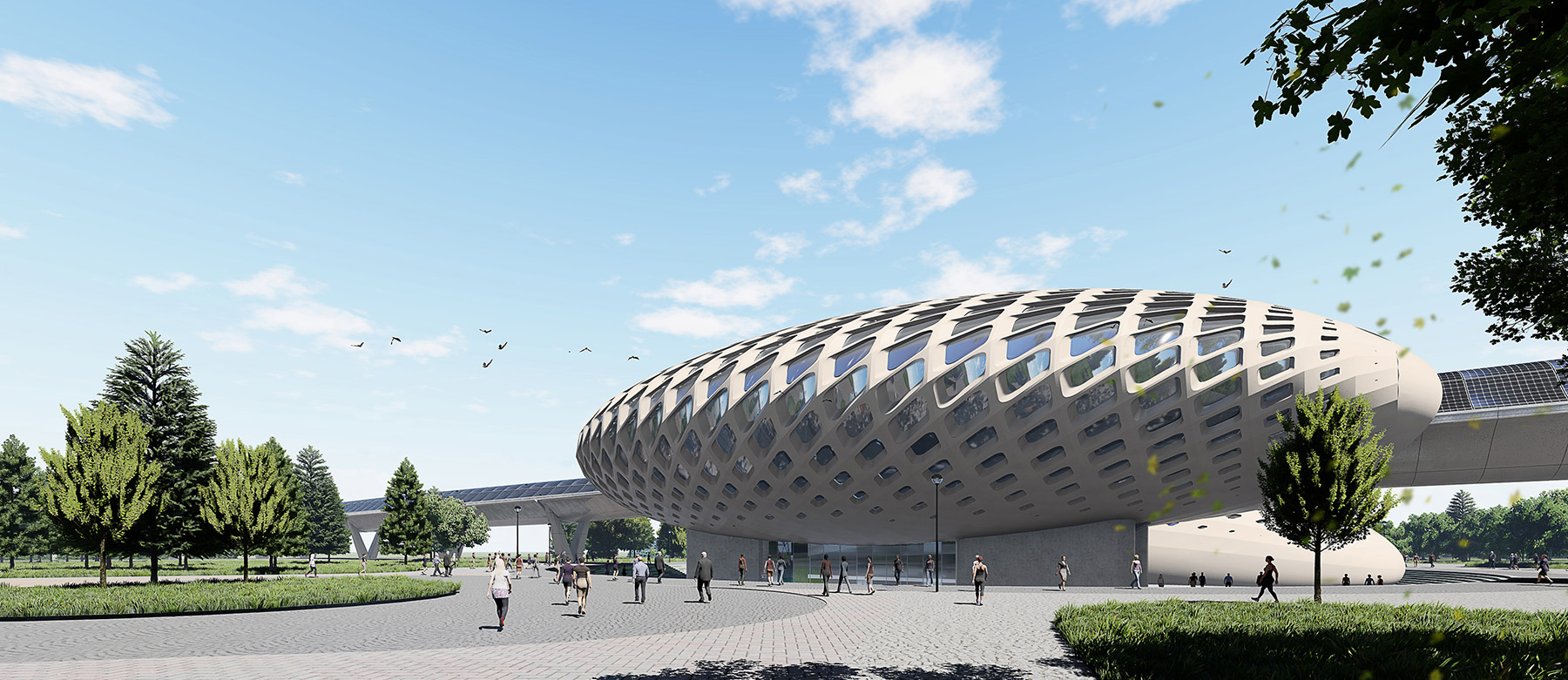
By Robert L. Reid
Still recovering from the pandemic, public transit agencies and the civil engineering firms that work with them seem optimistic about the industry’s future. Money, technology, and a commitment to greater equity and flexibility are among the forces driving this reinvigorated transportation sector in new directions.
Although the COVID-19 pandemic hit public transit systems hard — as many people stopped commuting to work and others grew wary of traveling anywhere on buses or trains with other passengers — the industry seems to be rebounding and even looking forward to expansion. That’s what Civil Engineering learned after speaking with more than a dozen engineers, planners, managers, and other experts in public transportation issues.
Public transit systems serve unique and diverse populations and regions, of course, each with their own experiences, challenges, and opportunities. But as Civil Engineering discussed the future of public transit with the representatives of these various entities and the engineering consultants they work with, five key themes emerged.
These themes demonstrate an optimism and confidence in the future of public transit, especially given recent commitments to new funding.
They point to a new direction for public transit in terms of the motive power to move passengers from point A to point B.
They recognize the need for greater equity in transportation to better serve previously underserved groups and communities.
Along with that focus on equity must come a corresponding flexibility in how exactly to provide transportation services, how to move people, by what means, at what times of day, and to what destinations.
Finally, transit agencies are adopting new technologies to better operate their systems and meet the needs of their customers.
Individually, these ideas and approaches represent a commitment to significant change in the nation’s public transit systems. Together, they can help make such changes possible rather than just aspirational. Here we examine each in turn.
The future is ... bright

During the pandemic, the use of public transit fell dramatically. Across the nation, “transit ridership in 2020 dropped by 79% compared to 2019 levels,” according to a January 2021 report from the American Public Transportation Association, The Impact of the COVID-19 Pandemic on Public Transit Funding Needs in the U.S.
In New York City specifically, ridership on the city’s subway system in April 2020 was only 8.3% of what it had been a year earlier, according to information from the Office of the New York State Comptroller. Likewise, in Los Angeles, bus ridership dropped by roughly 70% and rail ridership fell by an estimated 80%, says Conan Cheung, chief operations officer at the Los Angeles County Metropolitan Transportation Authority.
In response, LA Metro cut back service on its bus and rail lines, essentially running Sunday-level limited service throughout the week, notes Cheung.
Since the worst of the pandemic, public transit use has been improving, although in many, if not most, locations it is not back to pre-pandemic levels. Still, key transit agency managers, as well as leading civil engineers from firms that work on public transit projects, express optimism about the industry. For one thing, recent federal legislation has promised a pot of money for public transit improvements.
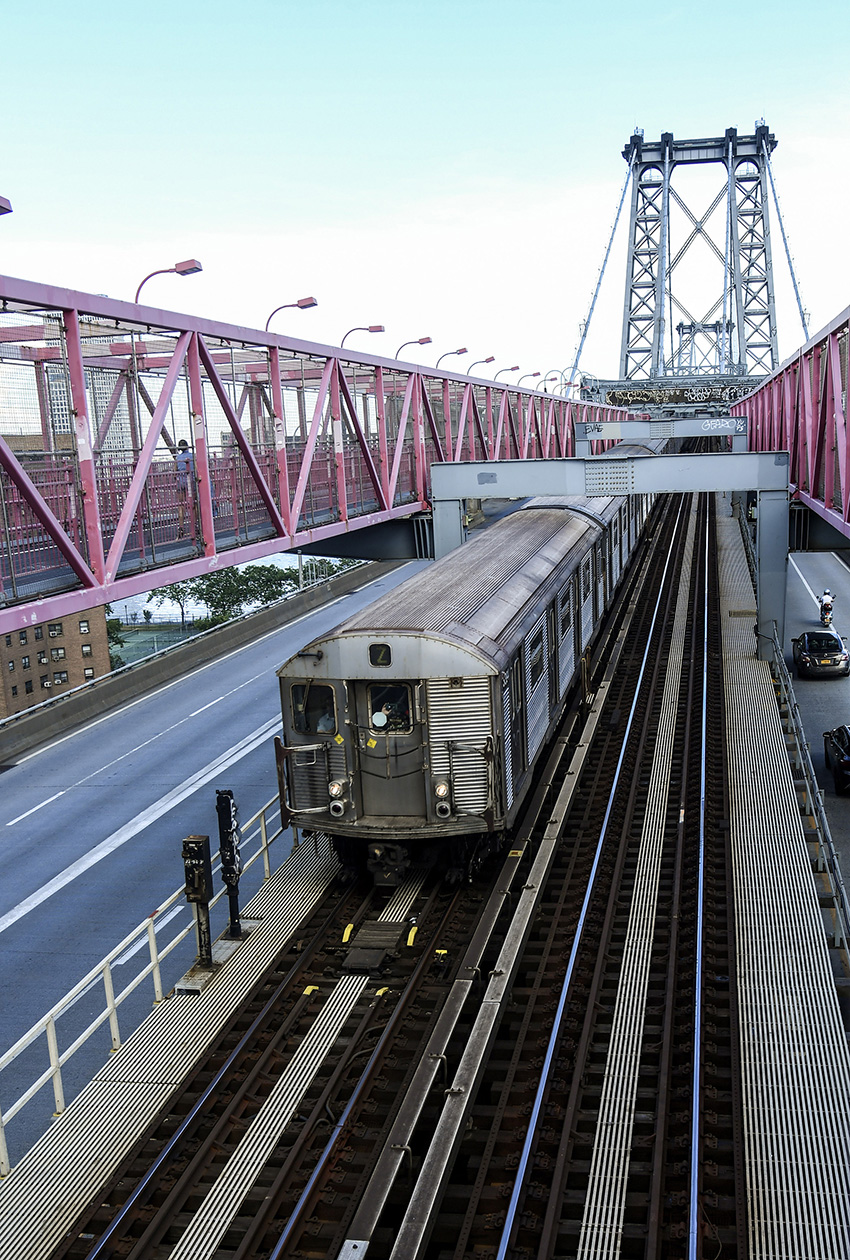
Under the $1.2 trillion Infrastructure Investment and Jobs Act, which President Joe Biden signed into law in November 2021, transit funding will increase 43% more than previously authorized levels. “Along with authorizing $69.9 billion for transit during the next five years, the law includes an additional $39 billion in appropriations for the sector, raising its overall funding” to nearly $109 billion, according to the article, “New infrastructure law provides historic federal funding,” by Jay Landers, which appeared as “Once in a Generation” in the March/April 2022 issue of Civil Engineering.
The new funding comes after dec-ades of reduced support for public transit because of federal tax cuts and reductions in revenue from the “cents per gallon” federal gas tax as vehicles became more fuel efficient, notes Eva Lerner-Lam, M.ASCE, a transportation policy consultant and the founder and president of Palisades Consulting Group Inc., in Tenafly, New Jersey. After years of being told to “do more with less,” Lerner-Lam says, “it’s very exciting” for civil engineers to have new funding to address today’s public transit needs.
Indeed, current trends represent one of the most dramatic changes in transportation public policy since the 1950s and 1960s when the Interstate Highway System was being constructed, Lerner-Lam says. So she believes transit-focused civil engineers need to adopt a “game-changing frame of mind ... to really seize this moment and force-multiply it, rather than spend down the newly appropriated funding using yesterday’s frames of reference.”
Evidence of public transit’s bright future reaches from coast to coast. In New York, the Metropolitan Transportation Authority is in the midst of a five-year, $55 billion capital program, which is 70% larger than previous capital programs, notes Jamie Torres-Springer, president of MTA’s Construction & Development department. Although the capital program was temporarily delayed by the pandemic, Torres-Springer describes the ongoing efforts as “an exciting time to be at the MTA!”
The program includes infrastructure maintenance and projects to expand the system, such as adding a third set of tracks to nearly 10 mi of the Long Island Rail Road and the East Side Access project, which will bring the LIRR into Grand Central Terminal via the soon-to-be-completed Grand Central Madison Terminal.
At LA Metro, the initial cutbacks were followed by restored service, then further reductions as new variants of the pandemic struck and staffing issues arose. But the agency is now busy with some 75 projects valued at $25 billion — thanks to a series of tax measures passed by the region’s voters “to affirm they want more transportation options,” notes Timothy Lindholm, P.G., the agency’s deputy chief program management officer. “If you’re interested in public transit and building tunnels, bridges, or stations, you couldn’t find a better place to be right now” than Los Angeles County, Lindholm exclaims.
Likewise, Mark Huffer, a project director and the national bus rapid transit practice leader in the Raleigh, North Carolina, office of engineering consultant HNTB, sees interesting, innovative, and complex projects in bus and rail being developed across the country. Noting that changes in ridership patterns are creating opportunities to change how transit services are provided, Huffer stresses that “when you talk about the future, this is a very good opportunity for transit to evolve, as it always has over the past century or so.”
Of course, not everything related to the transit industry is rolling along smoothly. Operating expenses at transit agencies escalated during the pandemic, explains the January 2021 APTA report, because of rising costs for personal protective equipment for agency workers, additional cleaning and disinfecting, and high rates of absences among agency personnel.
Moreover, despite the promised influx of federal money — which can already be seen in new project starts — transit agencies remain challenged by several years of declining ridership and the resulting loss of revenue, notes John Deerkoski, P.E., M.ASCE, a senior principal and transportation practice co-leader in the New York office of engineering consultant Thornton Tomasetti. “Another challenge facing transit agencies and consulting firms is a decrease in engineering talent,” Deerkoski adds. “Currently, there is tremendous competition for a limited pool of skilled staff.”
Time pressures are also increasing, as transit agencies try to deliver projects more quickly than previously, which requires consulting firms to modify their project delivery methods and business models “to provide detailed designs in an unreasonable time frame,” Deerkoski believes. “This is especially true for design-build procurements,” he adds, noting that some agencies do not allow enough time for the pre-bid designs and bids to be developed at the onset of the request for proposals phase.
“This places undue pressure on the project teams and introduces tremendous risk to the design-build team as (it does) not have time to fully develop the designs and vet alternate technical concepts,” Deerkoski says.
Agencies should allow “a minimum of 16 weeks for the development of the bids after release of the RFPs and allow even more time if the project is particularly complex,” Deerkoski concludes.
The future is ... electric
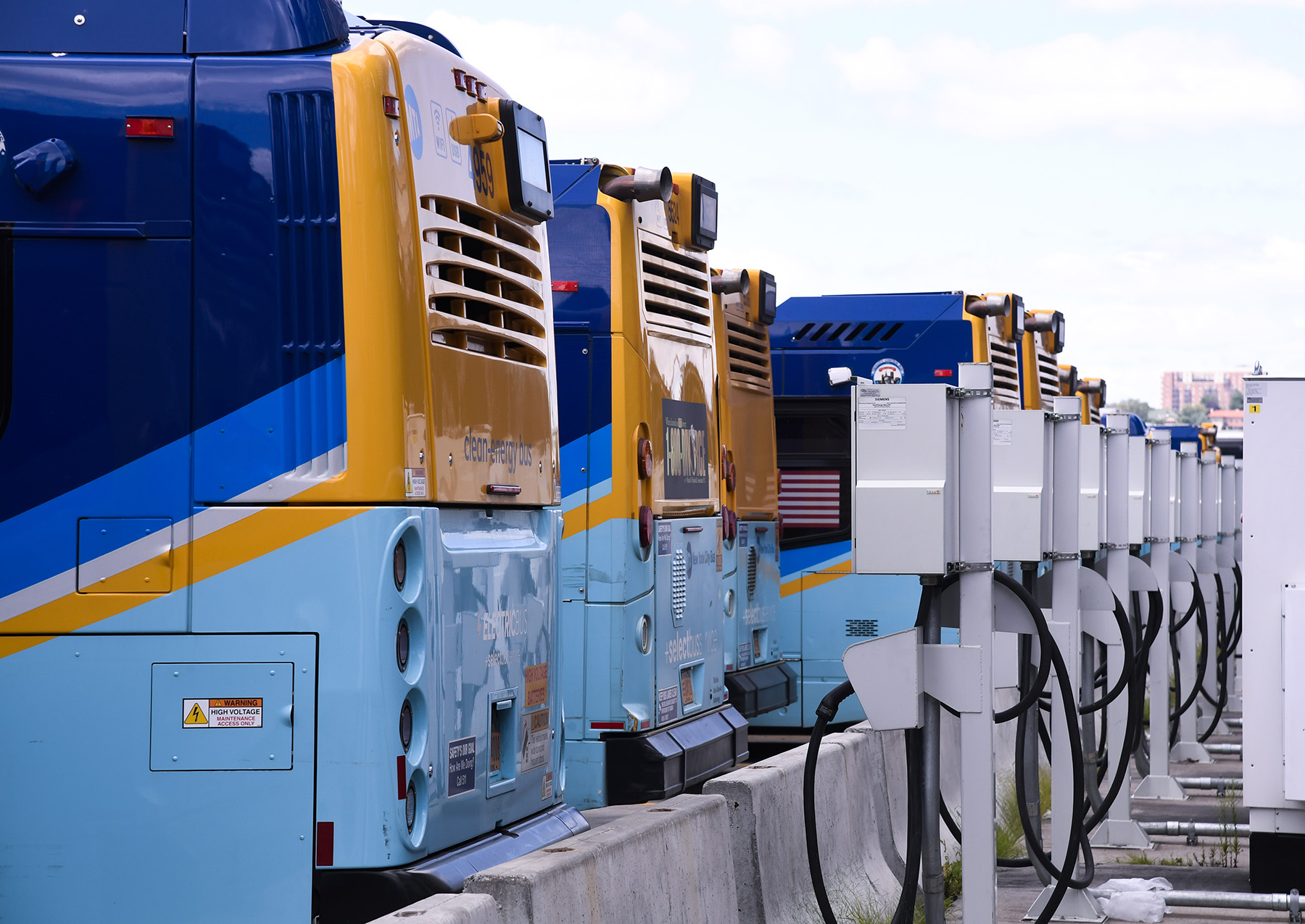
After decades of running buses powered by fossil fuels, especially diesel, many transit agencies are turning to, or at least considering, renewable power sources for their vehicles. Some, such as those in California and New York, face state mandates to make their bus fleets zero emissions by fixed dates. Others are encouraged to make the transition by grant money from the Federal Transit Administration — as part of the IIJA funding — which has made roughly $1.6 billion available to transit agencies and others to spur the purchase of zero-emission buses.
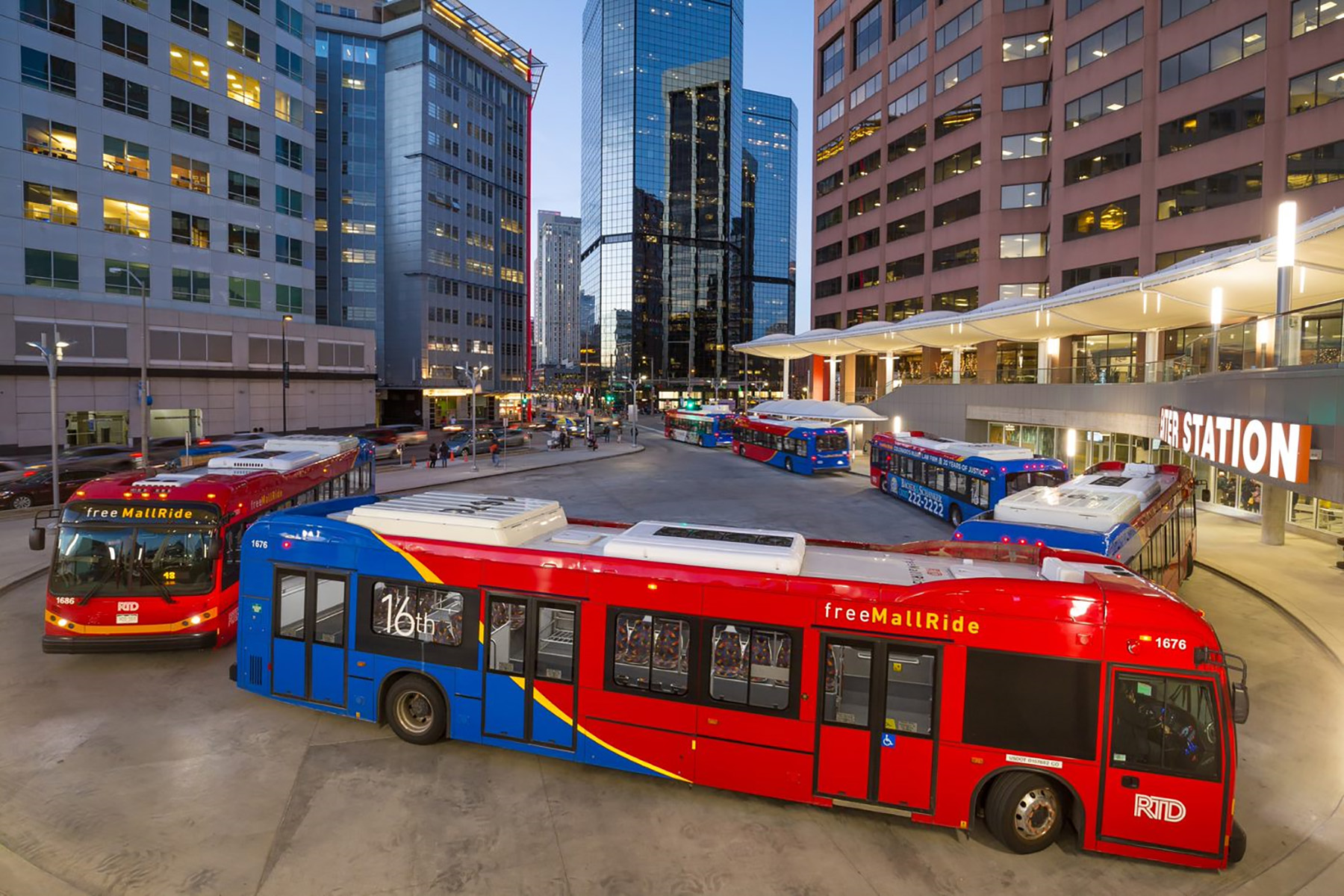
What this usually means, of course, is electric vehicles, which can be powered and recharged by various systems, including onboard batteries that can be recharged at depots or stops along a route, catenaries and overhead fast-charging technologies, and other approaches. But the transition is not as easy as just buying more electric vehicles. MTA plans to electrify its fleet of some 5,800 buses by 2040 and “modernize our bus depots and other systems to allow for charging equipment,” says Torres-Springer.
Another critical factor is making sure that electric buses can provide the same service range as existing fleets. LA Metro, for example, operates buses powered by compressed natural gas but is in the process of converting to electric vehicles. The agency has concerns, however, about the range of EVs, which does not match what the CNG fleet provides, says Lindholm.
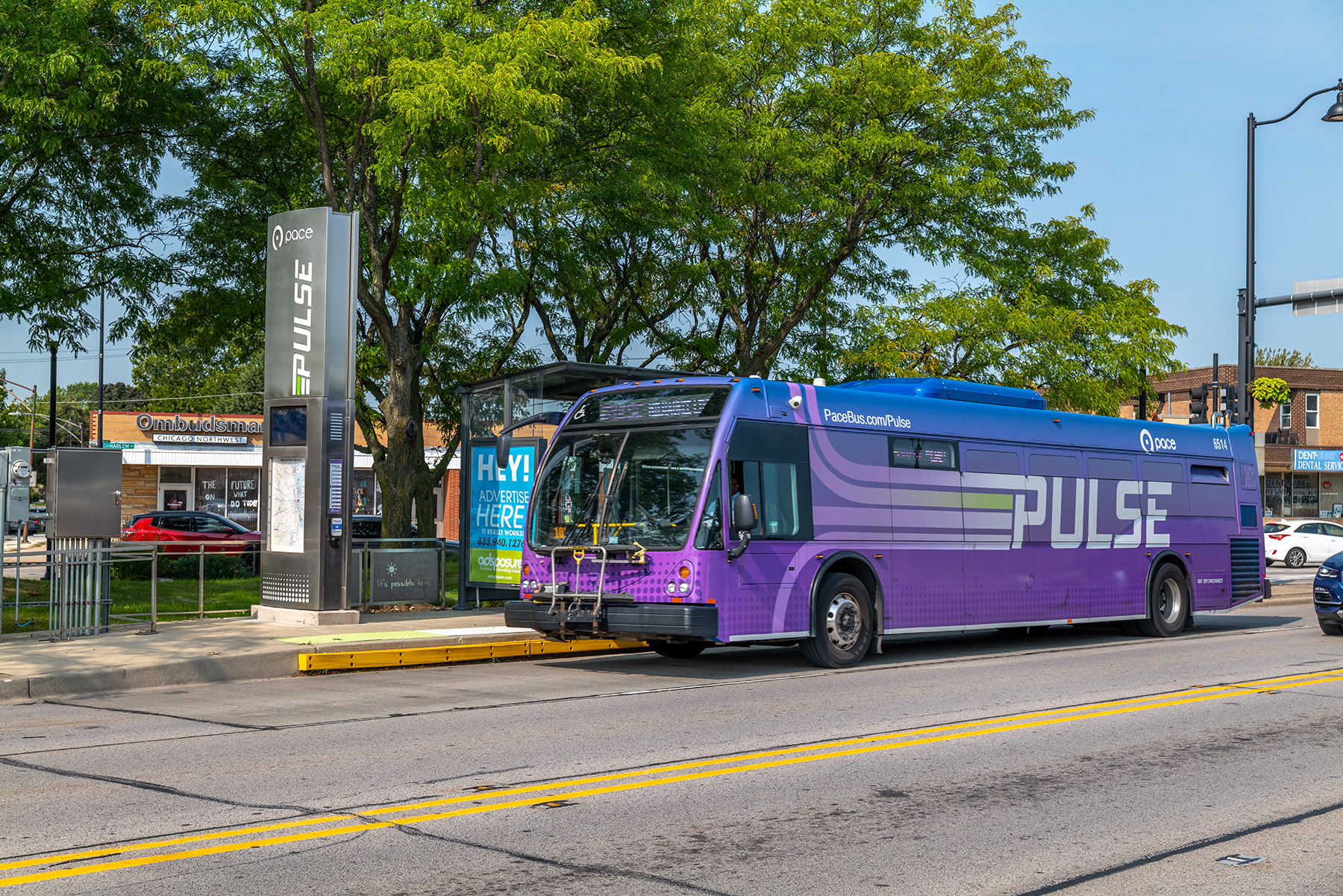
“It’s not necessarily a one-to-one swap between a battery bus and a natural gas bus as far as range,” Lindholm says. On some routes, for example, the agency might need to assign two electric buses to provide the same service as one CNG vehicle.
LA Metro also needs to make certain that local utilities can provide the power for an entire fleet of electric vehicles. “If we don’t have the utilities supporting us with electricity, then we can’t charge and operate the buses,” Lindholm stresses.
And while it’s generally better if the power used to charge electric buses comes from renewable sources, the generation of electricity by a power plant burning fossil fuels is still far more efficient than burning fossil fuels in an internal combustion engine, notes Pawel Woelke, Ph.D., P.E., M.ASCE, a senior principal in Thornton Tomasetti’s applied science practice in the New York office. Thus, transit systems have a “significant opportunity” in making the switch to electric buses, Woelke concludes.
The pricing of electricity is another issue transit agencies need to consider when converting to electric buses — especially because the actual costs of charging electric vehicles are not transparent, warns Lerner-Lam.
She points specifically to a pricing mechanism used by energy companies called “demand charges” that can lead to unexpectedly high electric bills, which is something Lerner-Lam experienced personally when she started charging her Tesla electric car from a detached garage at home. Because the energy company erroneously characterized the new line as “commercial and industrial,” Lerner-Lam says her electric bill shot up from $72 a month to $325, even though she had charged her EV during off-peak hours.
Demand charges involve a price tier that utilities often add to commercial and industrial customers to recover the capital costs of building a system that can “provide enough power to meet peak demand whenever needed,” according to a May 14, 2019, article in the Denver Post, “RTD’s electric 16th Street Mall buses cost nearly 60% more to operate than diesel coaches.” As the newspaper headline noted, Denver’s Regional Transportation District discovered that its fleet of 36 electric buses actually cost more to operate per mile than its diesel-powered vehicles, largely because of unanticipated demand charges.
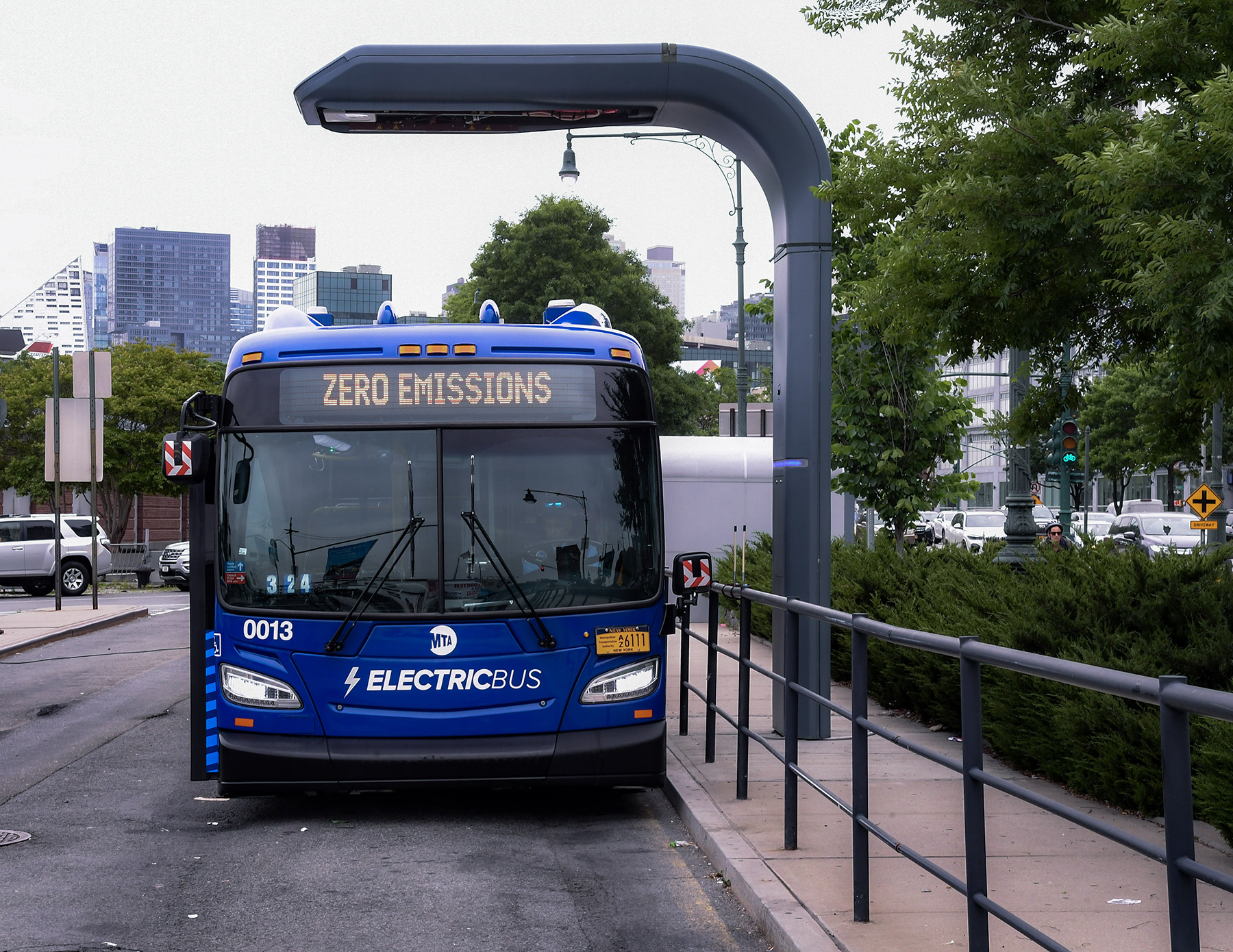
Such costs “started to raise some eyebrows” when RTD first announced them, notes William Weidenaar, P.E., the manager of technical services for the agency’s vehicle maintenance bus operations department. Since then, RTD has worked with its utility, Xcel Energy, and the Colorado Public Utilities Commission to help bring down the rates it pays to charge the electric buses. RTD also installed an electrical load management system to balance maximum charging load needs. “Rather than charging all buses at once,” Weidenaar explains, “the software makes decisions to charge buses in stages based upon predetermined parameters.”
It is difficult to compare EVs to diesel buses, however, because of their different duty cycles and maintenance costs and the fact that the electric buses use electricity for heat, Weidenaar says. “We use as much (energy) in heat as we do in propulsion,” he explains, which he admits was a bit of a surprise.
Transit agencies and their civil engineering consultants also need to consider the fact that electric buses tend to be as much as 40% heavier than diesel buses and produce greater wheel torque, which must be factored into the specifications for bus stop pavements to avoid more frequent repairs and higher maintenance, notes Lerner-Lam. “Let’s work together to figure out which bus stops will be the first to use those heavier (electric) buses,” she suggests, “so we can install the appropriate bus pads before we have to play catch-up when the pavement gets damaged.”
The future is ... equitable
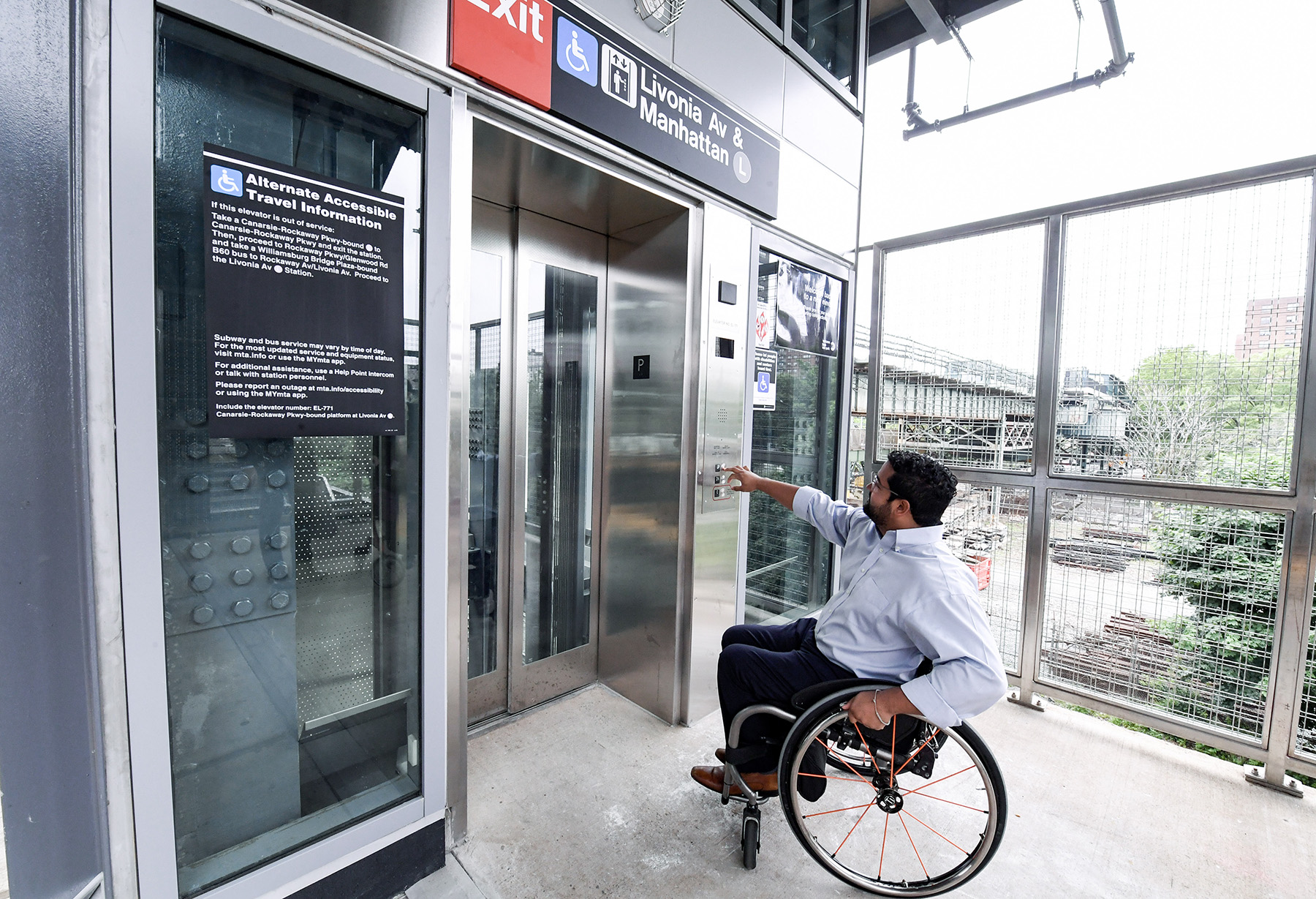
For many transit operators, the experience of the pandemic seems to have inspired a greater attention to equity issues. In part, this is because some of the only passengers using public buses and trains during this period were service workers who could not perform their jobs from home.
At LA Metro, for example, the agency applies an “equity lens in the budgeting process to focus where we spend the money, giving a strong preference to underprivileged communities,” says Sameh Ghaly, P.E., PEng, a senior transit and transportation executive at the agency. In October, for instance, LA Metro opened part of the new K Line light rail service — a project that will extend the agency’s light rail network an additional 8.5 mi through historically underserved neighborhoods such as the Crenshaw District, Inglewood, Westchester, and surrounding communities. The project will also connect the system to Los Angeles International Airport, providing new opportunities for these same communities.
In New York, mass transit is “an engine of equity” that connects the region’s diverse neighborhoods to the city’s economic core, says Torres-Springer. But there are pockets in the city and the region that are not as well served by public transit as others, he concedes. So that’s where MTA is looking to expand its rail system through such projects as the Interborough Express.
Connecting to 17 existing subway lines, the IBX will provide rapid transit services to underserved areas in Brooklyn and Queens, where approximately 70% of the corridor’s residents are people of color, 19% are below the poverty line, and 50% of the households do not own a car, according to MTA’s website on the project.
An extension to the Second Avenue Subway Line will serve neighborhoods predominantly occupied by people of color and people living in poverty, Torres-Springer says, while the Metro North Penn Station Access project will provide new service to people living in the “transit desert” of the East Bronx via four new stations along the existing Amtrak Hell Gate Line.
In Northern California, the San Mateo County Transit District, also known as SamTrans, uses equity as a guiding principle in its Reimagine SamTrans project that prioritizes service investments “in communities where concentrations of residents experience the most mobility and economic disparities,” according to the March 2022 Reimagine SamTrans Final Report.
Three demographic factors, as well as population density, are used to identify so-called equity priority areas in San Mateo County: lower-income households, in which the residents earn less than $75,000 per year; nonwhite households, in which the residents identify as races or ethnicities other than white; and zero-car households, in which the residents do not have access to private vehicles.
Transit agencies are also addressing equity by working to make their facilities more accessible to people with disabilities. At MTA, for instance, only about 27% of subway stations are considered accessible under the Americans with Disabilities Act, explains Torres-Springer. But the agency has committed $5.2 billion to making 95% of the stations ADA compliant by 2055 — primarily by installing elevators where there are none.
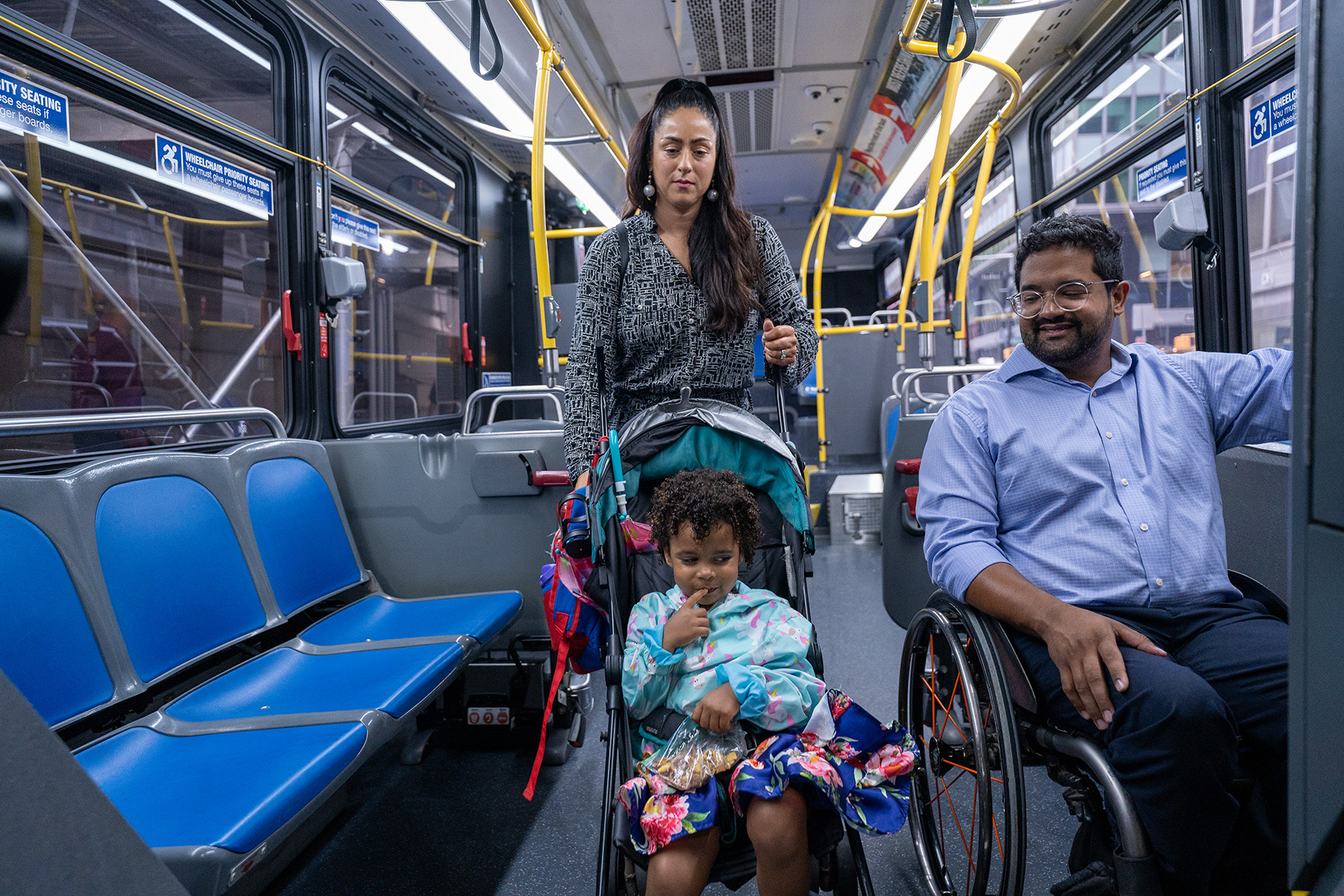
Almost $600 million will also be spent to upgrade existing elevators to improve reliability. The four new stations along the Hell Gate Line will all be ADA accessible, Torres-Springer adds.
MTA’s accessibility project is especially challenging in the constrained conditions of a dense, urban environment, where many of the stations are deep underground or elevated well above grade, Torres-Springer notes. As a result, entire stations will have to be substantially rebuilt or modified — such as at the elevated Livonia Avenue station, where late last year a new mezzanine above the track level was constructed so that people could cross over the line and take a new elevator down to street level.
Although the effort was an enormous and expensive undertaking, it demonstrated “our commitment to equal access to the transit system,” Torres-Springer notes.
Under the All Stations Accessibility Program, created by the IIJA, the FTA has promised some $686 million in grants to assist transit agencies in making their rail stations more accessible. In addition to the MTA, transit systems in Chicago, Boston, Cleveland, Philadelphia, Pittsburgh, Seattle, and other localities will also receive federal assistance to “repair, improve, modify, retrofit, or relocate station elements or facilities for passenger use,” according to the FTA.
The future is ... flexible

In addition to bringing service in general to underserved communities, transit agencies are also adopting more flexible approaches to providing services across the board. These efforts range from the types of vehicles being used to the times of day services are provided.
Commute times are getting spread out, with people “not commuting only at 8 a.m.,” notes Huffer. “They might come to work at 10 a.m. and leave at 3:30 p.m. and finish their day working from home or commute to the office only two to three days per week.”
As the pandemic finally waned and LA Metro restored transit service throughout its region, the agency adjusted its bus routes to better match customer needs, says Cheung. In some areas, however, traditional fixed-route service no longer seemed optimal, and certain routes were discontinued because of low ridership.
But instead of cutting anyone off from transit options, LA Metro implemented a concept known as microtransit that relies on ride-hailing services such as Uber and Lyft — called transportation network companies in transportation industry jargon — to help customers in such neighborhoods get to their destinations.
Likewise, in San Mateo County, a roughly 12-seat shuttle service used to follow a mostly fixed loop through a neighborhood in which customers could call 24 hours in advance to request special pickups at locations that were not part of the regular route, notes Daniel Shockley, a principal planner at SamTrans.
A microtransit pilot project made that shuttle service even more flexible, allowing customers to request a ride at any time via their smartphones; a tablet computer was installed in the shuttle bus so the driver could easily find the site where the customer wished to be picked up, explains Shockley. The project has since been made permanent in Half Moon Bay and East Palo Alto, Shockley adds.
Microtransit projects demonstrate how the concept of “public transit” is becoming more flexible, explains Lerner-Lam. “What agencies are trying to do is move people in an optimal way,” she says. So when it does not make sense to have a 45-passenger bus serving a particular route from, say, 10 p.m. to midnight, transit agencies are contracting with private operators of smaller vehicles, from vans to individual cars, to make sure that small groups or even individual customers can get home.
On the other end of the transit scale, some agencies are also looking to provide intercity service through combinations of rail and bus systems. The Colorado Department of Trans-portation provides an express bus service known as Bustang that connects Denver to Fort Collins, Colorado Springs, and the I-70 mountain corridor. Virginia, Nebraska, and at least one county in California provide similar services, sometimes contracted through private bus operators.
Within cities, bus rapid transit is being adopted by transit agencies in more flexible ways, notes Huffer. When BRT projects were first being implemented, they were often in smaller or mid-sized markets that did not also offer rail services, Huffer says. But BRT is increasingly becoming “part of the portfolio of services offered by transit agencies, even in cities that currently have rail systems,” he notes, pointing to, among others, Houston’s METRONext program that combines light rail and BRT.
The definition of BRT systems also varies widely, from approaches that rely on simple signage to designate the BRT bus-only lanes, perhaps only during certain hours of the day, to ones separated by physical barriers and even to LA Metro’s plans for a system that incorporates railroad-style signal gates at intersections along its G Line service. “It’s all those kinds of innovations that I think will make BRT more attractive and more robust in the future,” Huffer predicts.
The future is ... technological
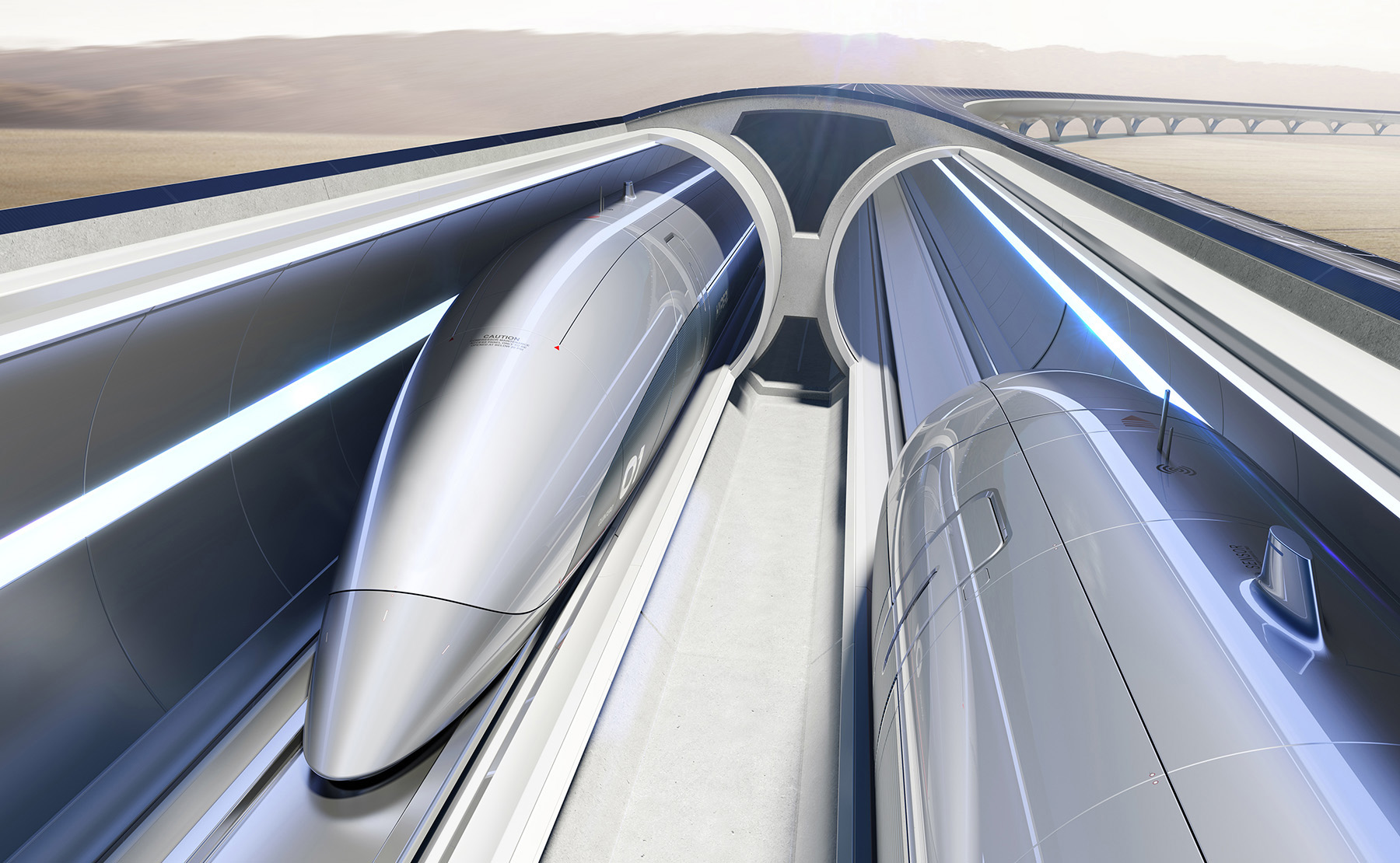
The adoption of railroad-style crossing gates for buses — which LA Metro hopes can save as much as 20 minutes in travel time along a 20 mi G Line corridor — is one of many new types of technology that can help transit agencies improve service and construct projects.
Modern tunneling machines have largely eliminated problems with settlement through the way they control compressed air and the use of continuous grouting, notes LA Metro’s Ghaly.
At MTA, the agency is adopting the Oracle Primavera P6 scheduling system for planning, managing, and executing projects. As such, MTA needs its civil engineering partners to have “a highly advanced skill set in terms of modern construction software,” notes Torres-Springer.
Cameras and sensors along LA Metro’s new K Line will monitor thousands of aspects of the system simultaneously, says Ghaly, enabling transit control staff members to better understand how the system is operating so that they can quickly respond to maintenance issues or other problems.
Future connected vehicles will be able to alert transit drivers to traffic conditions, notes Huffer. Likewise, autonomous connected vehicles may help multiple buses work together along LA Metro’s G Line in so-called platoons, moving through the gated intersections together to increase the movement of passengers and decrease the amount of time the intersection would be closed by the gates, explains Lindholm.
Transit signal prioritization, or TSP, has long been a key technology for improving transit operations. Under these TSP systems, a device alerts the traffic signals at intersections to an approaching bus. The system then either extends a green light or shortens a red light to ensure the bus makes it through the intersection faster.
Such systems have long relied on devices that had to be installed on the bus itself and in the traffic control cabinet that operates the signal at the intersection; there are also devices that can be embedded in the road surface to detect the approaching bus.
But these traditional TSP systems presented various problems or limitations. For example, in one system used by SamTrans the device only extends the green light but cannot shorten the red light, notes Shockley. The signal controllers in this case are not under SamTrans’ control, he adds.
Sometimes the early generation of TSP systems — using the in-pavement loop as an antenna to transmit service calls — did not function during lane changes by TSP-equipped buses, says David Kobayashi, P.E., M.ASCE, a senior transportation engineer at the Santa Clara Valley Transportation Authority in Northern California.
And because the signals and control cabinets might be owned by a local city or jurisdiction other than the transit agency, the installation and maintenance of the systems was not within the agency’s purview. That could lead to long delays for installations and other issues, Kobayashi notes. The traffic signal systems his agency works with are generally owned by other agencies within Santa Clara County, Kobayashi adds.
Moreover, the bus-based devices were often not fitted onto every vehicle, which limited the ability of the agency to ensure that a TSP bus was always available for certain routes, Kobayashi says.
Both SamTrans and the Santa Clara Valley Transportation Authority recently tested a new cloud-based TSP system from LYT, of Santa Clara. Because this system worked with existing technology on the transit vehicles — such as the wireless internet service that customers had sought, Kobayashi notes — the LYT system was quick to set up and available on many more buses. It also provided the agency with real-time tracking of its vehicles as well as historical traffic data — a feature other systems did not provide, Kobayashi says.
The LYT system is able to alert up to three traffic signals in a row that a bus is approaching, which maximizes the probability that the bus will get a green light, notes Murad Salahi, a machine learning engineer at LYT. And because of the LYT system’s real-time monitoring, it can even alert the transit agency to problems along the route, such as lost communications, failed vehicle detection, stuck pedestrian push buttons, failed coordination cycles, or coordinated split timing, says Patrick Armijo, P.E., PEng, a principal traffic engineer at the firm.
The LYT TSP system helped buses in the Santa Clara Valley Transportation Authority system move “significantly” faster along their routes — helping combat a trend that in recent years had seen the average systemwide speed of buses decline by 1-1.5% annually, notes Tamiko Percell, a transportation planner at the agency. Over a 30-year period, she adds, bus speeds had declined by roughly 20%.
“When the trip time for a route varies by a wide range, it is hard to schedule (buses) tightly,” Percell explains. “Because of that variability, we must schedule to the slowest trips, which adds artificial delay into the schedule. But TSP removes a lot of that variability to make trip times more consistent, and then we can have tighter schedules.”
SamTrans also experienced “pretty significant improvements to service travel times” in an LYT project it piloted along a relatively limited but congested segment of a corridor in the East Palo Alto area, says Shockley. SamTrans deployed another TSP system at the same time that also provided “modest” improvements, he adds.
The agency’s own operations might somewhat hamper the benefits of TSP, he adds, because some of the routes are configured in inefficient manners — with stops located on the near side of an intersection. As a result, the traffic light might change as passengers get on and off at the stop even with TSP.
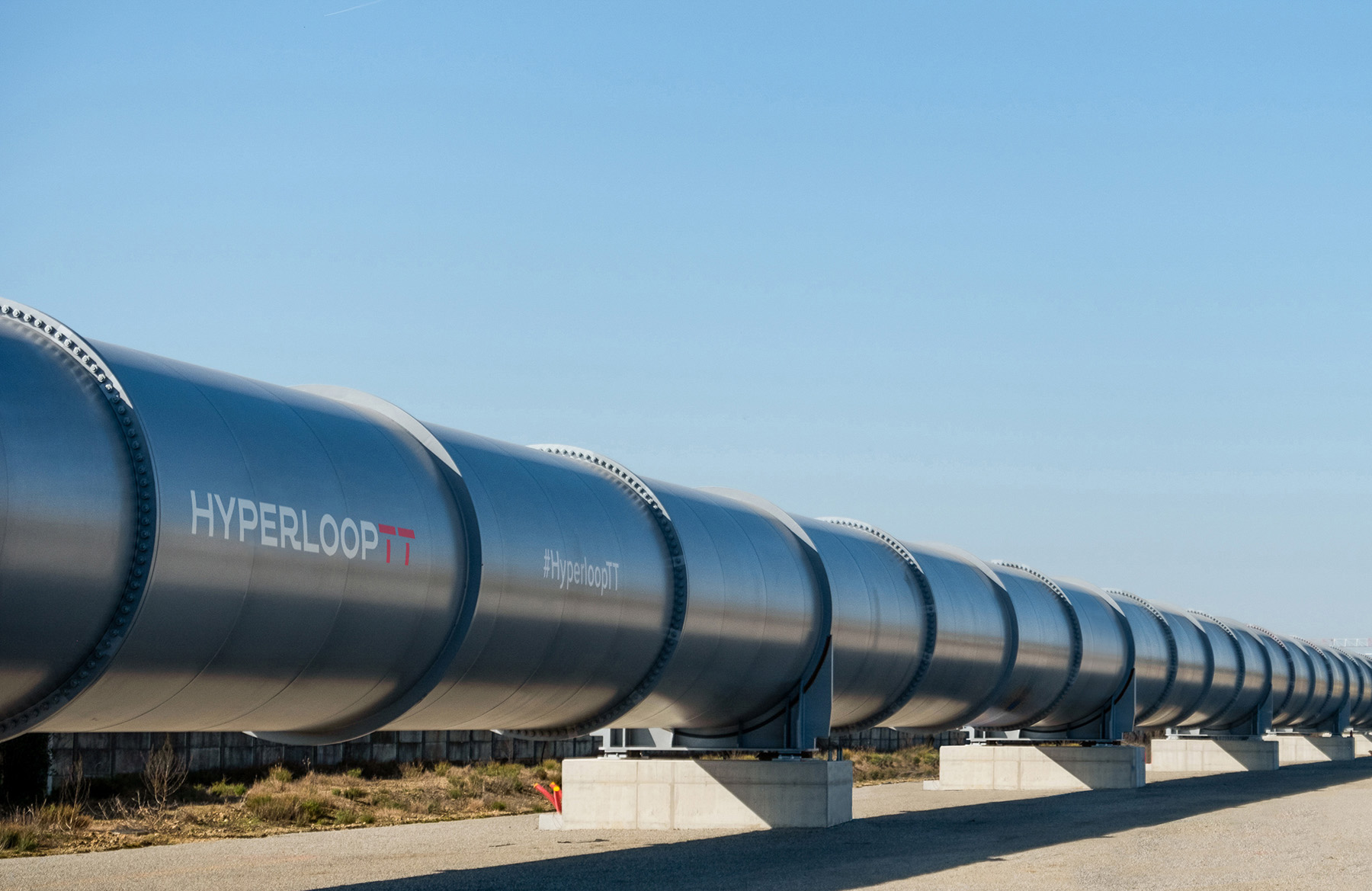
SamTrans is looking at possible changes to its stop placements “to make sure we maximize the benefits TSP can bring,” Shockley adds.
For intercity transit, the developing technology known as a hyperloop system offers a chance “to redefine transportation methods in that it is something of a hybrid between a plane and a train,” notes Woelke. Thornton Tomasetti is involved in a hyperloop development project with Hyperloop Transportation Technologies, based in Los Angeles.
The technology features a tube-based system that operates in a near vacuum and promises to move people and goods “in levitating capsules at airplane speeds on the ground ... by using passive magnetic levitation technology and a linear electric motor in a tube with minimal pressure,” according to the HyperloopTT website.
Although the hyperloop concept was initially associated with billionaire Elon Musk, the term now describes a generic system. Such a system could send multiple capsules — each with as many as 50 passengers — from the same starting point to different destinations, rather than sending an entire train from just point A to point B.
“This is a whole new way of doing transit!” declares Woelke.
As civil engineers look to the future of public transit, they need to reach out and collaborate with other specialists, especially in the renewable energy and telecommunications industries, says Lerner-Lam. Understanding those two industries is essential to maximizing the use of green energy and incorporating more data-driven, intelligent systems into transit operations.
Lerner-Lam also issues a critical warning regarding the telecommunications side: Civil engineers and the transit agencies they work with must determine who owns the data that will be collected by the existing and future smart devices used in America’s transit systems. Sometimes the providers of those intelligent devices are controlled by foreign governments, including governments hostile to American interests, Lerner-Lam notes. So, it is essential to know who will have access to that data and to incorporate the necessary cybersecurity to keep the data safe.
But by working closely with the telecommunications and renewable energy industries, civil engineers will be able to “do what we are supposed to do, which is to be the world’s systems integrators,” Lerner-Lam explains.
Robert L. Reid is the senior editor and features manager of Civil Engineering.
This article first appeared in the March/April 2023 issue of Civil Engineering as “The Future of Public Transit ... Is.”



